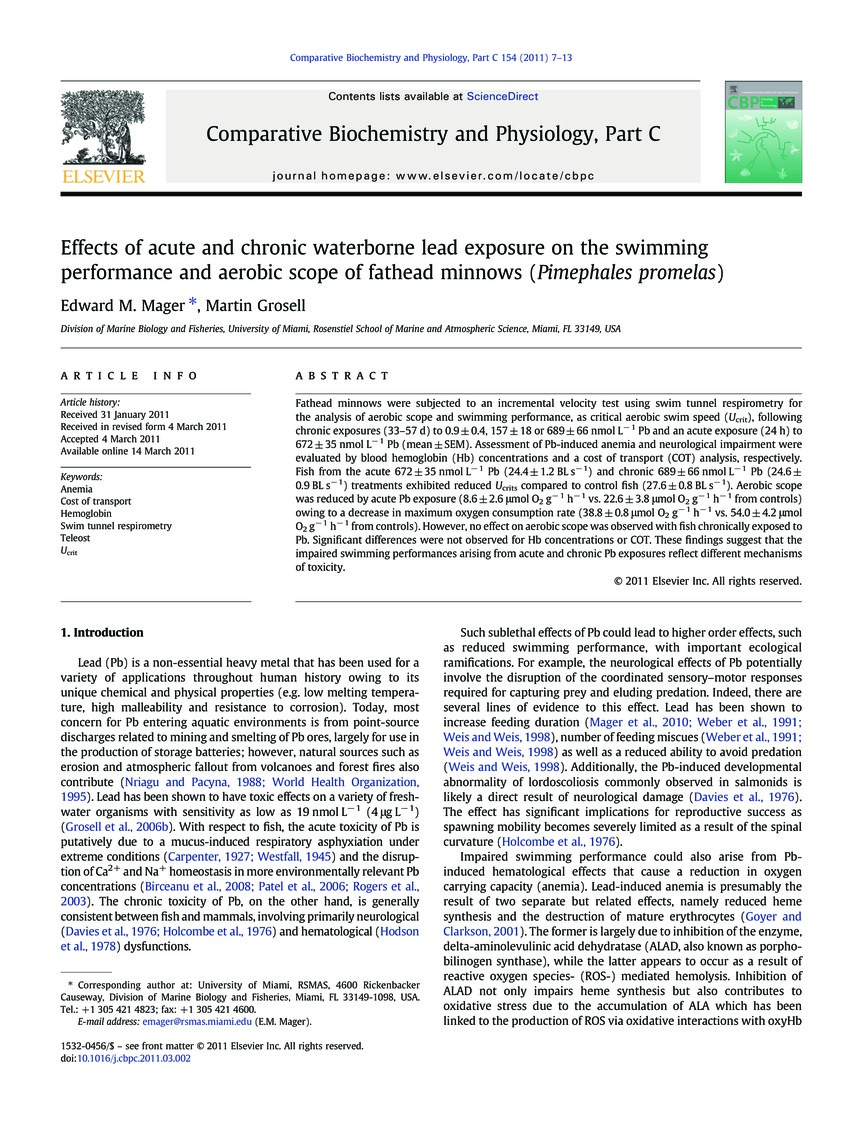Journal Article
AccessEffects of Acute and Chronic Waterborne Lead Exposure on the Swimming Performance and Aerobic Scope of Fathead Minnows (Pimephales promelas)
Fathead minnows were subjected to an incremental velocity test using swim tunnel respirometry for the analysis of aerobic scope and swimming performance, as critical aerobic swim speed (Ucrit), following chronic exposures (33–57 d) to 0.9 ± 0.4, 157 ± 18 or 689 ± 66 nmol L− 1 Pb and an acute exposure (24 h) to 672 ± 35 nmol L− 1 Pb (mean ± SEM). Assessment of Pb-induced anemia and neurological impairment were evaluated by blood hemoglobin (Hb) concentrations and a cost of transport (COT) analysis, respectively. Fish from the acute 672 ± 35 nmol L− 1 Pb (24.4 ± 1.2 BL s− 1) and chronic 689 ± 66 nmol L− 1 Pb (24.6 ± 0.9 BL s− 1) treatments exhibited reduced Ucrits compared to control fish (27.6 ± 0.8 BL s− 1). Aerobic scope was reduced by acute Pb exposure (8.6 ± 2.6 μmol O2 g− 1 h− 1 vs. 22.6 ± 3.8 μmol O2 g− 1 h− 1 from controls) owing to a decrease in maximum oxygen consumption rate (38.8 ± 0.8 μmol O2 g− 1 h− 1 vs. 54.0 ± 4.2 μmol O2 g− 1 h− 1 from controls). However, no effect on aerobic scope was observed with fish chronically exposed to Pb. Significant differences were not observed for Hb concentrations or COT. These findings suggest that the impaired swimming performances arising from acute and chronic Pb exposures reflect different mechanisms of toxicity.
Publisher - Elsevier
Subjects - Fish, Fathead Minnow, Pimephales promelas; Chemical, Lead
Citation: Mager EM, Grosell M. 2011. Effects of Acute and Chronic Waterborne Lead Exposure on the Swimming Performance and Aerobic Scope of Fathead Minnows (Pimephales promelas). Comp. Biochem. Physiol. C; 154(1):7-13 http://dx.doi.org/10.1016/j.cbpc.2011.03.002
